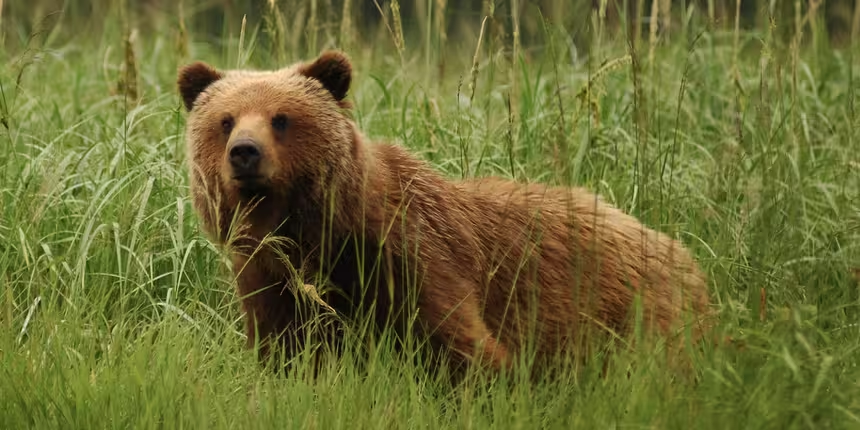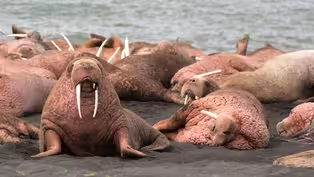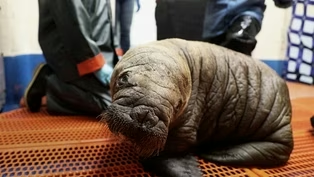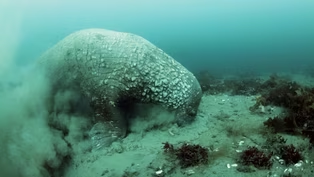
What is the Arctic Death Spiral?
Clip: Season 44 Episode 1 | 2m 42sVideo has Closed Captions
Discover how rapidly declining sea ice is reshaping the future for walruses.
The Arctic “death spiral” refers to the rapid loss of sea ice caused by climate change. For walruses, this means losing the ice platforms they rely on to rest, raise their young, and hunt. Discover how melting sea ice is reshaping their future.
Problems playing video? | Closed Captioning Feedback
Problems playing video? | Closed Captioning Feedback
Major support for NATURE is provided by The Arnhold Family in memory of Henry and Clarisse Arnhold, Sue and Edgar Wachenheim III, The Fairweather Foundation, Charles Rosenblum, Kathy Chiao and...

What is the Arctic Death Spiral?
Clip: Season 44 Episode 1 | 2m 42sVideo has Closed Captions
The Arctic “death spiral” refers to the rapid loss of sea ice caused by climate change. For walruses, this means losing the ice platforms they rely on to rest, raise their young, and hunt. Discover how melting sea ice is reshaping their future.
Problems playing video? | Closed Captioning Feedback
How to Watch Nature
Nature is available to stream on pbs.org and the free PBS App, available on iPhone, Apple TV, Android TV, Android smartphones, Amazon Fire TV, Amazon Fire Tablet, Roku, Samsung Smart TV, and Vizio.
Buy Now

Explore More Ways to Watch
Bring the beauty and wonders of wildlife and natural history into your home with classic NATURE episodes.Providing Support for PBS.org
Learn Moreabout PBS online sponsorship- The lifecycle of sea ice is also driven by the sun.
The cool thing about ice in the Arctic is that it takes a while to form, but it can go away very rapidly.
The freeze up is a gradual thing, and the thaw can be very abrupt.
As the sea ice melts, it leaves behind a growing expanse of dark water that absorbs more energy from the sun.
The warmer water melts the remaining ice even faster.
And as Arctic summers become warmer, more and more sea ice is disappearing.
It's been called the Arctic Death Spiral.
It is kind of personal for me because when I came up here in 1982, there was a lot of sea ice, and now 42 years later, we've lost a third of the summer sea ice.
So just in my own personal memory of the Arctic, we've lost about a million square miles of summer ice, and you have to imagine that that's gonna have some impact on the walrus.
When I was doing my research back in the '80s, I was using side scan sonar to locate walrus feeding grounds.
These are on the shallow continental shelf that bridges Russia and Alaska.
Here, the rich sea floor contains vast clam beds.
A marine version of the Great Plains grasslands.
Walrus mothers and calves depend on the moving sea ice to carry them over this rich source of food.
But now, as the sea ice melts farther north, if they stay on their platforms, they'll be carried beyond the continental shelf into deep water and deep trouble.
The walrus is not gonna dive 8,000 feet down to eat clams.
It's used to diving down 200 feet deep clams.
So once the ice is off the edge of the continental shelf, it's not a useful tool for the walrus.
To survive, they must abandon their ice flows and head for land.
And they do so in extraordinary numbers.
Preview of Walrus: Life on Thin Ice
Video has Closed Captions
Preview: S44 Ep1 | 30s | See how the Arctic’s most enigmatic animals are coping as the sea ice melts. (30s)
This Tiny Walrus Will Melt Your Heart
Video has Closed Captions
Clip: S44 Ep1 | 2m 48s | An orphaned baby walrus, just a week old, gets a second chance. (2m 48s)
The Weird Way Walruses Eat With Their Tongue
Video has Closed Captions
Clip: S44 Ep1 | 2m 44s | It was once believed that walruses dug for clams with their tusks, but the truth is even stranger. (2m 44s)
Providing Support for PBS.org
Learn Moreabout PBS online sponsorship
- Science and Nature

Explore scientific discoveries on television's most acclaimed science documentary series.













Support for PBS provided by:
Major support for NATURE is provided by The Arnhold Family in memory of Henry and Clarisse Arnhold, Sue and Edgar Wachenheim III, The Fairweather Foundation, Charles Rosenblum, Kathy Chiao and...



